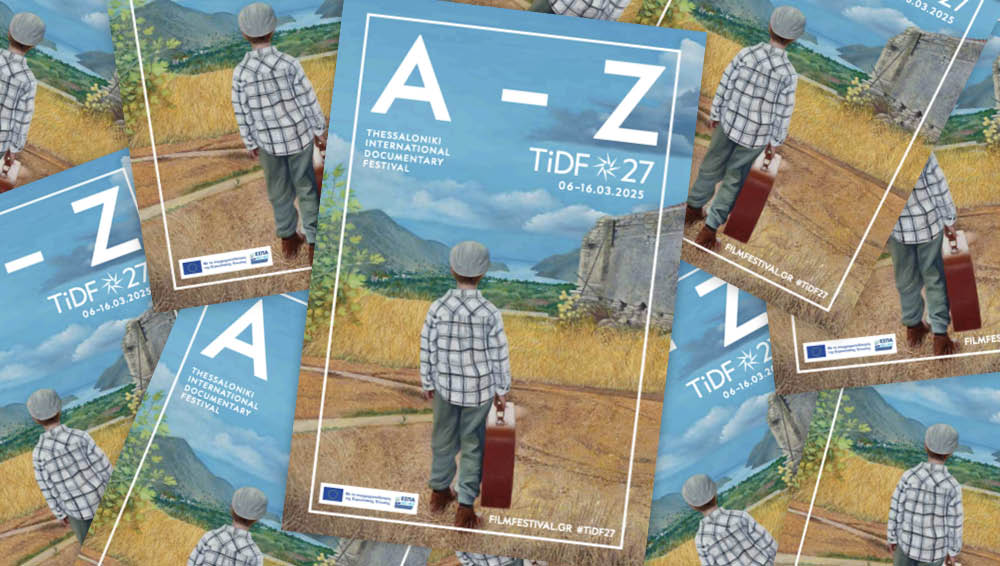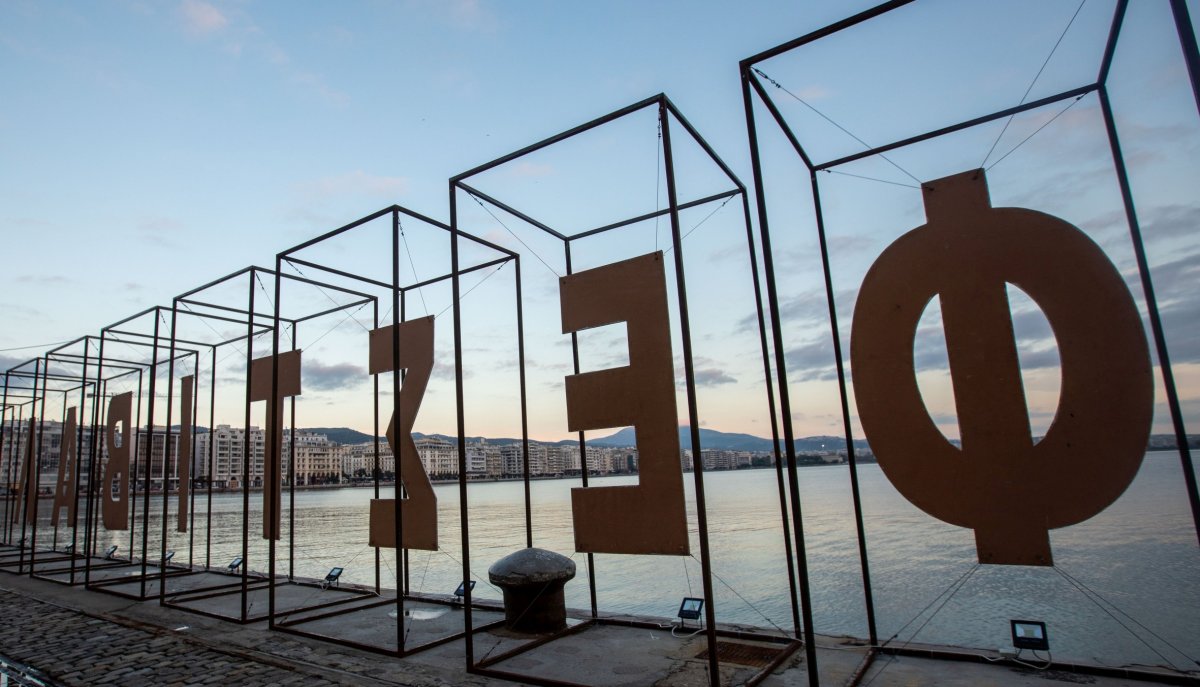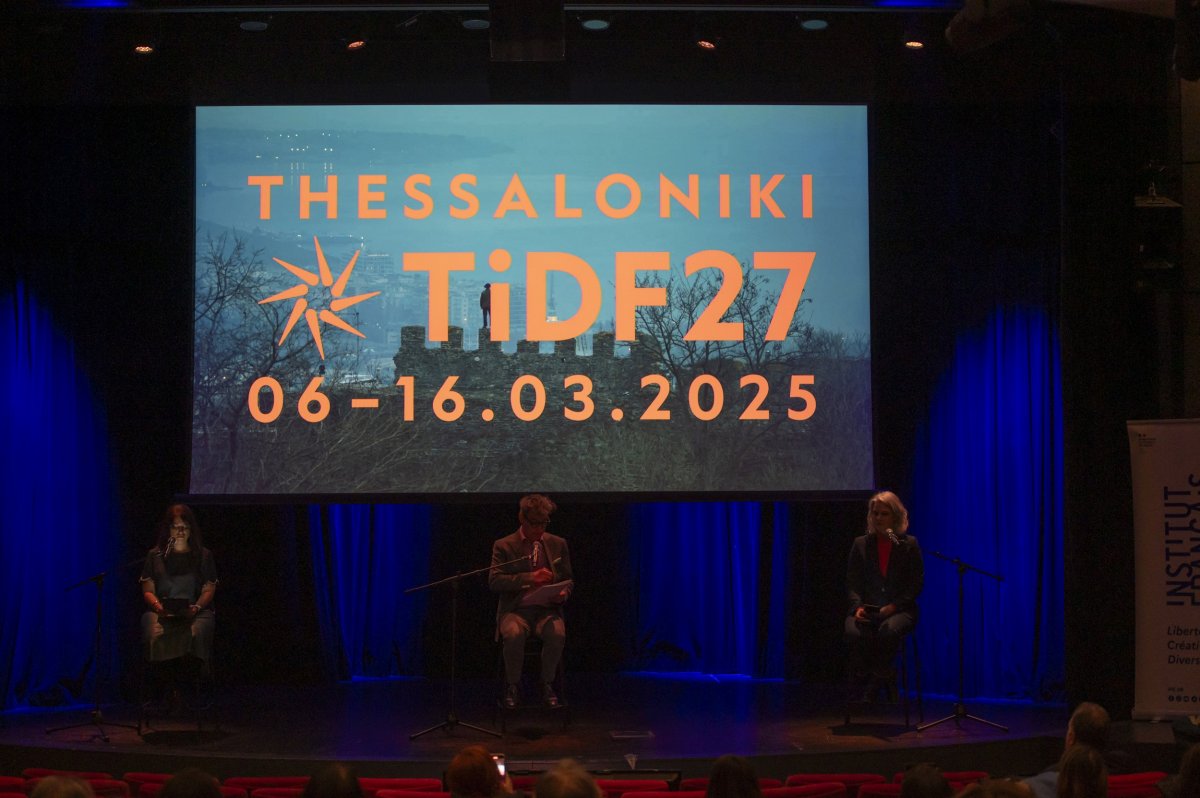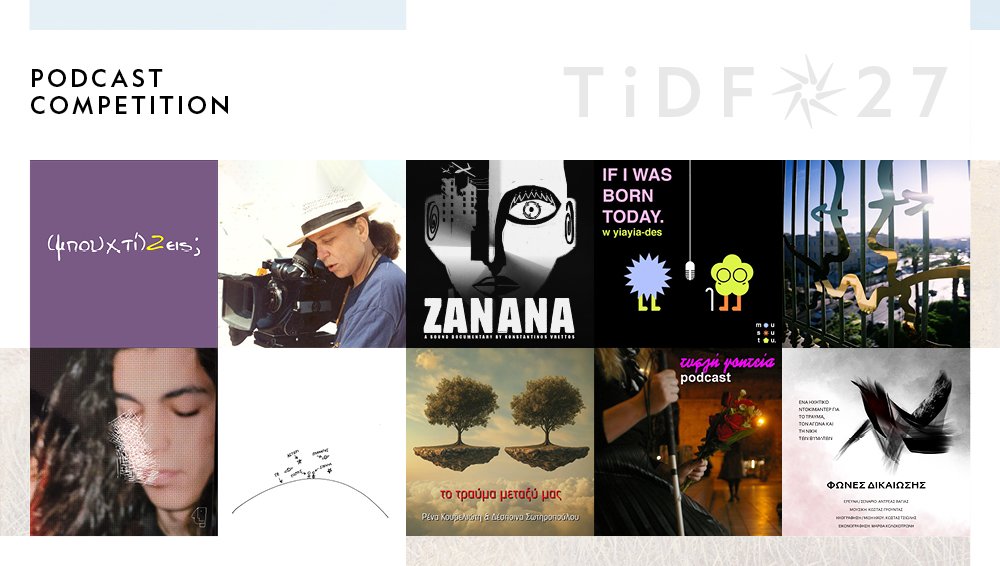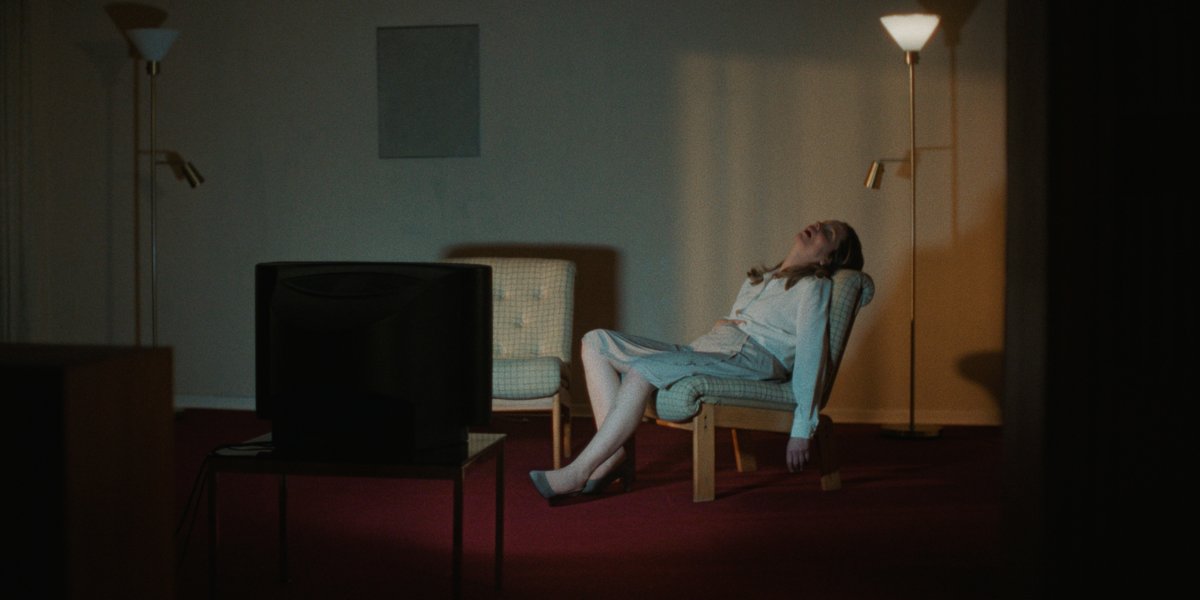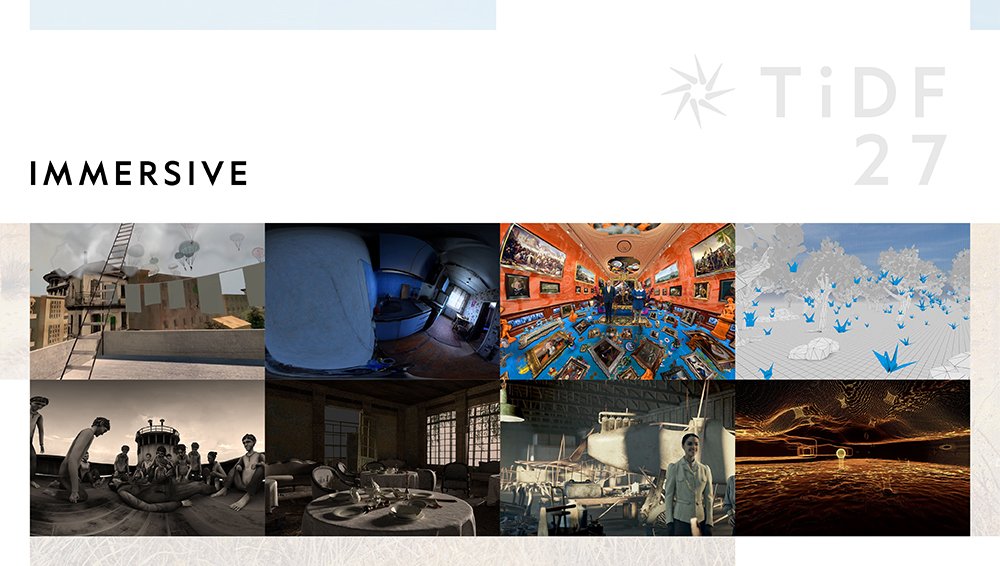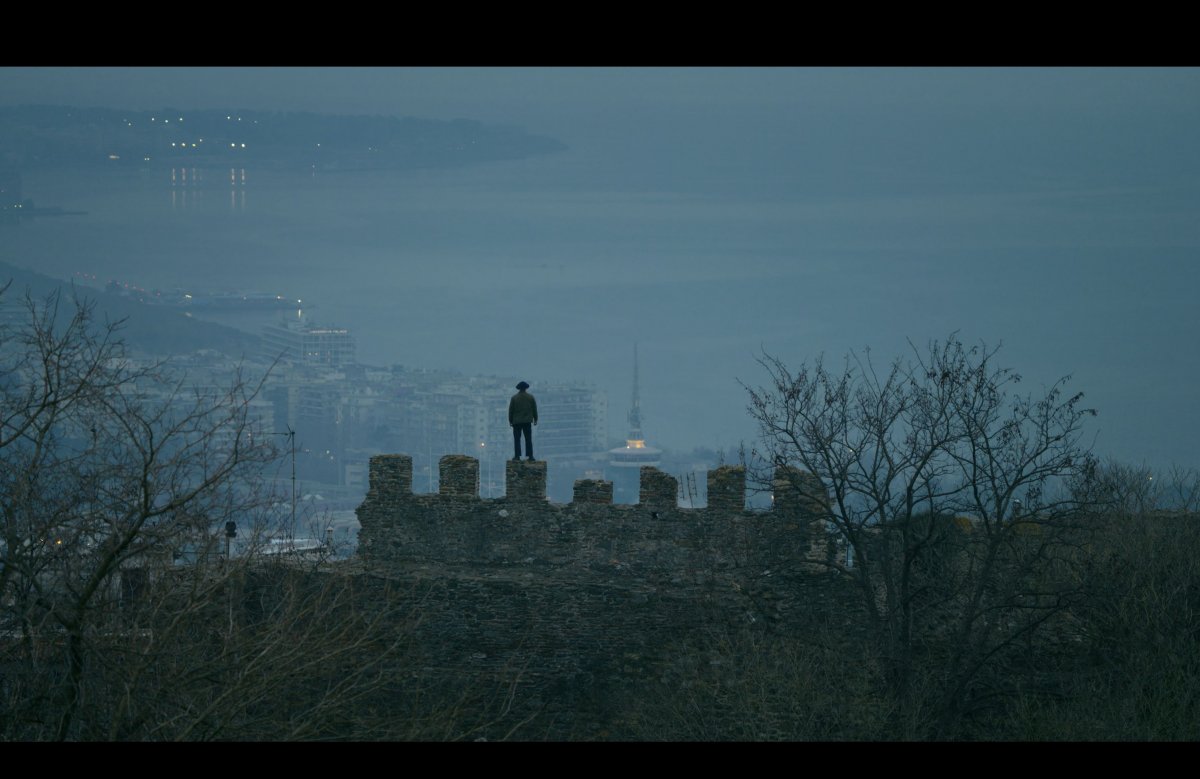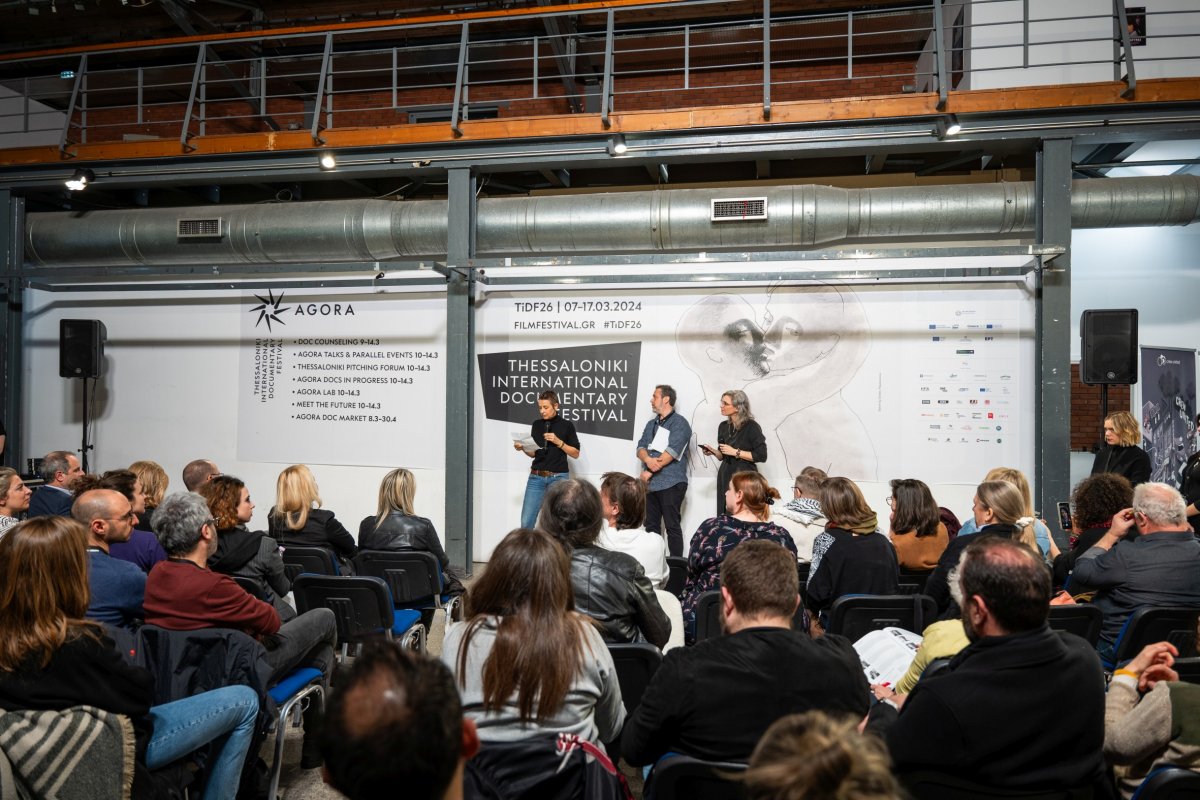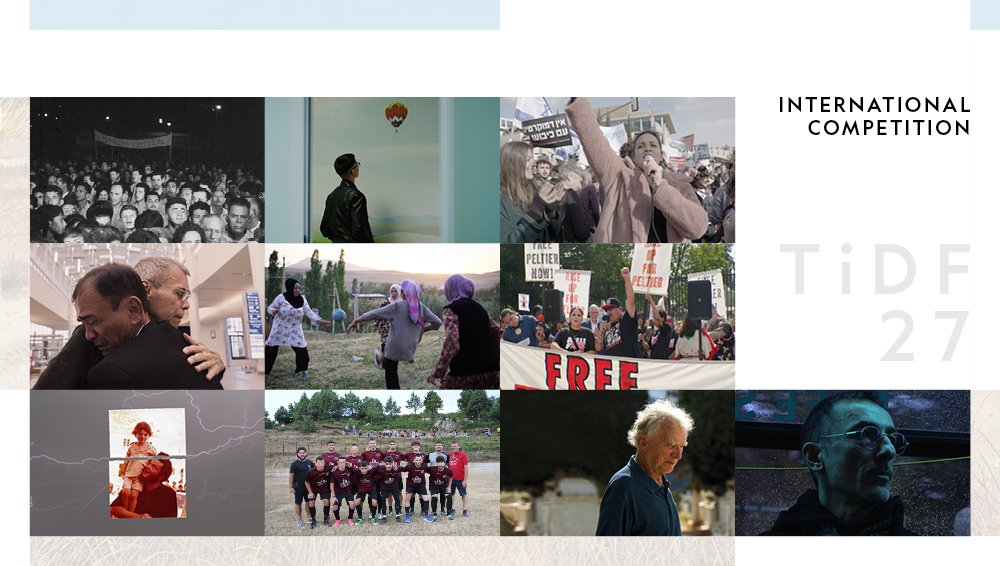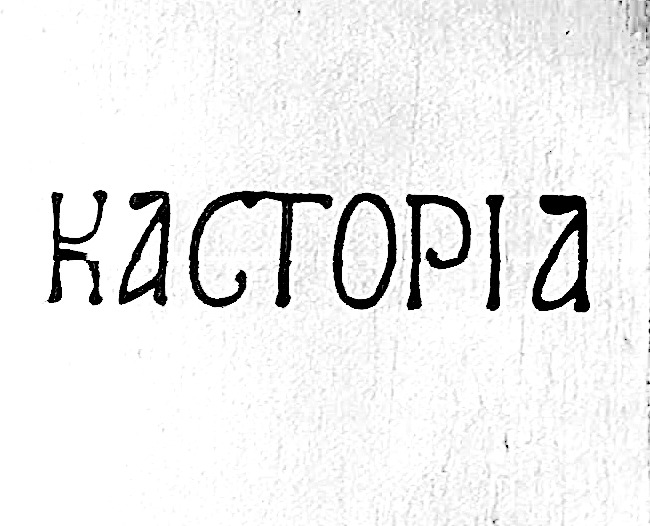As part of the 17th Thessaloniki Documentary Festival, the directors Arnaud Gaillard (Ikaria), Matteo Galliardi (A Nuclear Story) and Delphine Fedoroff (After us, Only the Burnt Earth) attended a press conference on Thursday March 19, 2015.
The first director to speak was Delphine Fedoroff, whose documentary After us, Only the Burnt Earth focuses on the village Dytiatki and its inhabitants, who experienced one of the biggest ecological disasters, the explosion at the Chernobyl Nuclear Power Plant, in April 1986. They refused to leave their village and continued to live on their land with, following their customs.
“I spent a lot of time with these people, nearly six years. During the first two years I didn't even shoot anything. I didn't have a camera. It was very important to me, and to the whole team, for the villagers to understand the reason why we were there and for them to accept us. In a way, these people were destroyed by the media and the journalists that presented them as crazy for wanting to continue living in the area”, the director explained and added “The disaster in the area is still visible, but they don’t want to focus on it all the time. Their first reaction, when they learned that I wasn’t a journalist, was to ask me if I wanted to see sick people and people that had been born with deformities. I said “Of course not”. I wanted to document their everyday lives. I wanted to examine the idea that life goes on and what happened after the disaster. The film features elderly residents and also young people that visit for the holidays. The older ones are a symbol of memory. The young people were like a mirror. They were like me in a way. I could relate to them. During the six years that we were there, we created strong connections with the locals. These people were destroyed by the press and the media because of the way that they were portrayed, so they are more conscious of exposing themselves to cameras”.
Next up was Arnaud Gaillard whose documentary Ikaria follows a group of the island’s residents during their attempts to save the local hospital, at all costs. “The whole story began in Kalymnos in 2010 – 2011, where I met people that were very enthusiastic and devoted to what they were doing. Teachers and doctors, despite the fact that their wages had been cut, and their prospects for the future dramatically changed, remained generous. They continued sowing the seeds for the next generation, as teachers, and struggling to save the quality of people’s lives, as doctors. I was impressed by them and I wanted to make a movie about them, focusing on their struggle. That’s when a teacher told me I should visit Ikaria, because of its history, of the way people interacted with one another, and because of the way their society is organized. So, I went to Ikaria, and on the first day there I miraculously stumbled upon the doctors that were leading the effort of the locals’ campaign to prevent the island’s hospital merge with the hospital of the neighboring island of Samos. I believed in these people and their cause and I decided to make a documentary about them. During filming I spent 4 to 5 months with them, under different circumstances, on Ikaria and also in Athens, where they went to demonstrate.” Gaillard explained and pointed out: ”Also, I know Greece very well, and I know that Greece also has a winter, so I didn't want to show Ikaria as a beautiful island in the summertime. I was enchanted by the characters and their struggle. I didn't want to be swept away by the postcard quality of the island. During the two screenings of the film here at the Thessaloniki Documentary Festival I reconnected with the medical team from the film and they told me that the hospitals hadn’t merged and the hospital in Ikaria hadn't closed, and that some doctors were still there, working and saving people’s lives”.
Matteo Galliardi’s documentary A Nuclear Story focuses on the nuclear disaster at the Daiichi nuclear power plant in Fukushima. The story is told from the perspective of the Italian journalist Pio d'Emilia, who - along with a team of foreign journalists - gained access to the power plant. The film also enlists Japanese cartoons and digital reconstructions that complement the story. “I wanted to make a very different kind of documentary about Fukushima. I wanted to tell the story of the disaster in a different way, firstly by using ‘’animanga’’ as I refer to them, to illustrate aspects of the story, for instance, how the explosion took place inside the nuclear reactor. The subject matter is very harsh and not for everyone. Not everyone is interested in nuclear disasters and not everyone lives close to a nuclear power plant. Also, I wanted to create something that would speak to a broader audience, in a cinematic way, not in a traditional documentary style. It was very difficult for me to understand the real events and to avoid easy solutions. Along with my team, we tried to create an objective documentary about the disaster in Fukushima. The documentary also tells the story of the journalist Pio d'Emilia. I felt the need to make something more complete, more humane, more intimate. Pio d'Emilia was my main tool, but he is also a very good journalist. The idea of telling the story of what happened in Fukushima through the eyes of a journalist was very attractive to me”, the director explained.
But how are the area’s inhabitants today? Do they express their emotions? The director said: “They’re not people that express themselves too much or cry publicly. The problem now isn’t the destruction of the cities, but the social issue that the refugees are dealing with. Most people continue to live in temporary houses. So, this country wasn’t hit as hard by radiation as it was by the psychological consequences of living close to a nuclear power station that continues to produce toxic waste. It is a daily fight against this monster. It is a problem for everyone, for the whole of humanity. It has changed the way that Japan looks at nuclear energy. Mothers are now very worried about the future of their children.”



